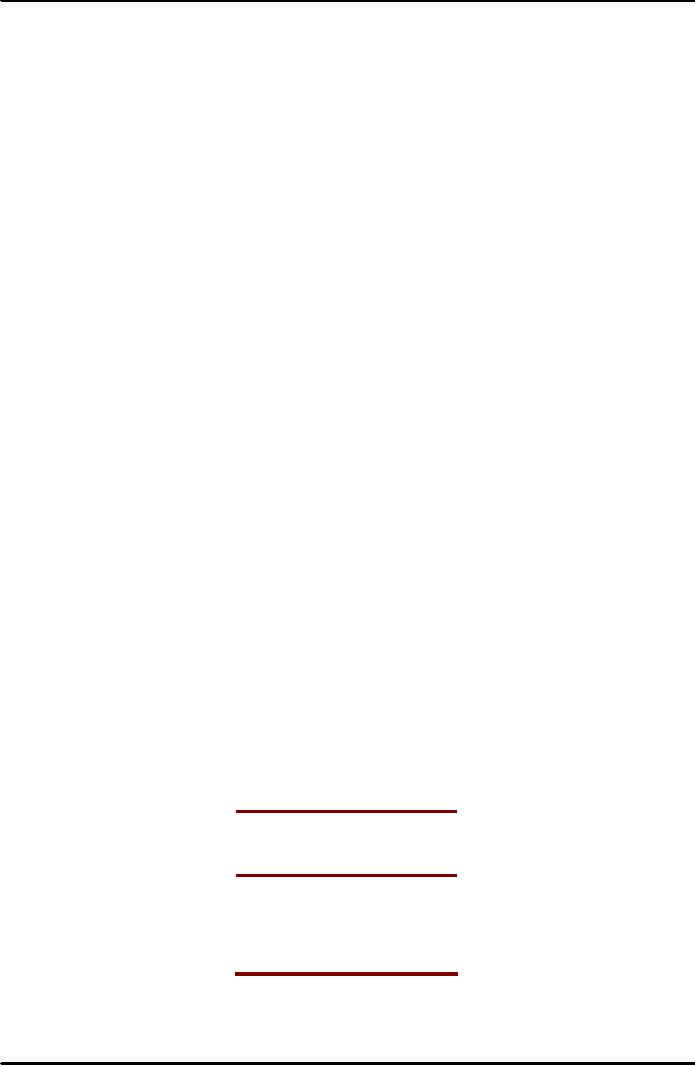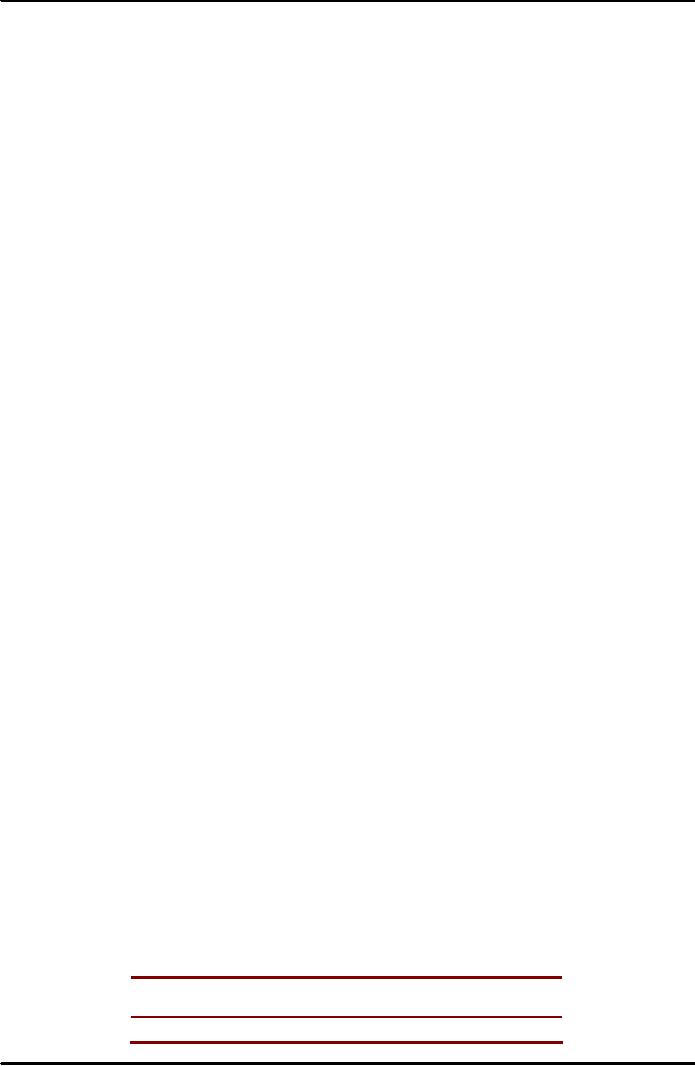 |
ELASTICITIES (CONTINUED………….):Short Run and Long Run, Incidence of Taxation |
| << ELASTICITIES (CONTINUED………….):Total revenue and Elasticity |
| BACKGROUND TO DEMAND/CONSUMPTION:CONSUMER BEHAVIOR >> |

Introduction
to Economics ECO401
VU
Lesson
3.3
ELASTICITIES
(CONTINUED.............)
If
the sign of income
elasticity of demand is positive,
the good is normal and if
sign is negative,
the
good is inferior.
Determinants
of Income Elasticity of
Demand:
The
determinants of income elasticity of
demand are:
�
Degree of
necessity of good.
�
The
rate at which the desire
for good is satisfied as
consumption increases
�
The
level of income of
consumer.
Short
Run and Long
Run:
Short
run is a period in which not
all factors can adjust
fully and therefore
adjustment to
shocks
can only be partial.
Long
run is a period over which
all factors can be changed
and full adjustment to
shocks can
take
place.
Incidence
of Taxation:
A
tax results in a vertical
shift of the supply curve as
it increases the cost of
producing the
taxed
product.
The
incidence of taxation relates to
how much of the tax's
burden is being borne
by
consumers
and producers. The more
inelastic the demand, the
more of the tax's burden
will
fall
on consumers. The more
inelastic the supply, the
more of the tax's burden
will fall on
producers.
Terms
of trade means the `real'
terms at which a nation
sells its exports and
buys its import.
OPEC:
Organization of Petroleum Exporting
Countries.
23

Introduction
to Economics ECO401
VU
END
OF UNIT 3 EXERCISES
Why
will the price elasticity of
demand for a particular
brand of a product (e.g.
Shell) be
greater
than that for the
product in general (e.g.
petrol)? Is this difference
the result of a
difference
in the size of the income
effect or the substitution
effect?
The
price elasticity of demand
for a particular brand is
more elastic than that
for a product in
general
because people can switch to
an alternative brand if the
price of one brand goes
up. No
such
switching will take place if
the price of the product in
general (i.e. all brands)
goes up. Thus
the
difference in elasticity is the
result of a difference in the
size of the substitution
effect.
Will
a general item of expenditure
like food (or clothing)
have a price-elastic or
inelastic
demand?
Discuss in the context of
income and substitution
effects.
The
income effect will be
relatively large (making
demand relatively elastic).
The substitution
effect
will be relatively small
(making demand relatively
inelastic). The actual
elasticity will
depend
on the relative size of
these two effects.
Demand
for oil might be relatively
elastic over the longer
term, and yet it could
still be
observed
that over time people
consume more oil (or
only very slightly less)
despite
rising
oil prices. How can
this apparent contradiction be
explained?
Because,
there has been a rightward
shift in the demand curve
for oil. This is likely to
be the
result
of rising incomes. Car
ownership and use increase
as incomes increase. Also
tastes may
have
changed so that people want
to drive more. There may
also have been a decline
in
substitute
modes of transport such as
rail transport and buses.
Finally, people may travel
longer
distances
to work as a result of a general
move to the suburbs.
Assume
that demand for a product is
inelastic. Will consumer
expenditure go on
increasing
as price rises? Would there
be any limit?
So
long as demand remains
inelastic with respect to
price, then consumer
expenditure will go on
rising
as price rises. However, if
the price is raised high
enough, demand always will
become
elastic.
Can
you think of any examples of
goods which have a totally
inelastic demand (a) at
all
prices;
(b) over a particular price
range?
a)
No goods fit into this
category, otherwise price
could rise to infinity with
no fall in demand
but people do not have
infinite incomes!
b)
Over very small price
ranges, the demand for
goods with no close
substitutes, oil,
water
(where
it is scarce) may be totally
inelastic.
What
will the demand curve
corresponding to the following
table look like?
If
the curve had an elasticity
of 1 throughout its length,
what would be the
quantity
demanded
(a) at a price of �1; (b) at
a price of 10p; (c) if the
good were free?
Q
Total
P
(�)
Expenditure
(�)
2.5
400
1000
5
200
1000
10
100
1000
20
50
1000
40
25
1000
The
curve will be a `rectangular
hyperbola': it will be a smooth
curve, concave to the
origin
which
never crosses either axis
(Qd = 1000/P).
24

Introduction
to Economics ECO401
VU
a.
1000 units.
b.
10 000 units.
c.
There would be infinite
demand!
Referring
to the following table, use
the mid-point (arc) formula
to calculate the
price
elasticity
of demand between (a) P = 6
and P = 4; (b) P = 4 and P = 2.
What do you
conclude
about the elasticity of a
straight-line demand curve as
you move down
it?
Price
Quantity Demanded
6
20
5
25
4
30
3
35
2
40
Using
the formula: (ΔQ/mid Q)
�
(ΔP/mid
P) gives the following
answers:
(a)
10/25 �
2/5
=
10/25 �
5/2
=
50/50
=
1 (which is unit
elastic)
(b)
10/35 �
2/3
=
10/35 �
3/2
=
30/70
=
0.43 (which is
inelastic)
The
elasticity decreases as you
move down a straight-line
demand curve.
Given
Qd = 60 15P + P�, calculate
the (point) price elasticity
of demand at a price
of:
a.
5
b.
2
c.
0.
Given
that:
Qd
= 60 15P + P�
Then,
dQ/dP
= 15 + 2P.
Thus
using the formula, Pεd
= dQ/dP �
P/Q,
the elasticity at the each
of the above price
points
Equals:
(a)
(15 + (2 �
5))
�
(5/
(60 (15 �
5) +
5�))
=
5 � 5/10 =
2.5
(b)
(15 + (2 �
2))
�
(2/
(60 (15 �
2) +
2�))
=
11 �
2/34 =
0.65
(c)
(15 + (2 �
0))
�
(0/
(60 (15 �
0) +
0�))
=
15 �
0/60 =
0
As
you move down a
straight-line demand curve,
what happens to elasticity?
Why?
It
decreases. P/Q gets less
and less, but dQ/dP
remains constant.
Given
the following supply
schedule:
2
4
6
8
10
P
0
10
20
30
40
Q
25

Introduction
to Economics ECO401
VU
a.
Draw the supply
curve.
b.
Using the arc method
calculate price elasticity of
supply:
i.
Between P = 2 and P = 4;
ii.
Between P = 8 and P = 10
c.
Using the point method
calculate price elasticity of
supply at P = 6.
d.
Does the elasticity of the
supply curve increase or
decrease as P and Q
increase?
Why?
e.
What would be the answer to
(d) if the supply curve
had been a straight line
but
intersecting
the horizontal axis to the
right of the
origin?
a.
The supply curve will be an
upward sloping straight line
crossing the vertical
axis
where
P = 2.
b.
Using the formula ΔQ/average Q
�
ΔP/average P,
gives:
10/5
�
2/3=
3
10/35
�
2/9=
1.29
c.
Using the formula dQ/dP
�
P/Q,
and given that dQ/dP = 5 (=
10/2), gives:
5
�
6/20=
1.5
d.
The elasticity of supply
decreases as P and Q increase. It
starts at infinity where
the
supply
curve crosses the vertical
axis (Q = 0 and thus P/Q
=∞).
e.
No. At the point where it
crossed the horizontal axis,
the elasticity of supply
would be
zero
(P = 0 and thus P/Q = 0).
Thereafter, as P and Q increased, so
would the
elasticity
of supply.
Which
are likely to have the
highest cross elasticity of
demand: two brands of tea,
or
tea
and coffee?
Two
brands of tea, because they
are closer substitutes than
tea and coffee.
Supply
tends to be more elastic in
the long run than in
the short run. Assume
that a tax
is
imposed on a good that was
previously untaxed. How will
the incidence of this
tax
change
as time passes? How will
the incidence be affected if
demand too
becomes
more
elastic over
time?
As
supply becomes more elastic,
so output will fall and
hence tax revenue will
fall. At the
same
time price will tend to
rise and hence the
incidence will shift from
the producer to the
consumer.
As
demand becomes more elastic,
so this too will lead to a
fall in sales. This,
however, will
have
the opposite effect on the
incidence of the tax: the
burden will tend to shift
from the
consumer
to the producer.
If
raising the tax rate on
cigarettes raise more
revenue and reduce smoking,
are there
any
conflict between the health
and revenue objectives of
the government?
There
may still be a dilemma in
terms of the amount by which
the tax rate should be
raised.
To
raise the maximum amount of
revenue may require only a
relatively modest increase in
the
tax
rate. To obtain a large
reduction in smoking, however,
may require a very large
increase
in
the tax rate. Ultimately, if
the tax rate were to be so
high as to stop people
smoking
altogether,
there would be no tax
revenue at all for the
government!
You
are a government minister;
what arguments might you
put forward in favour
of
maximising
the revenue from cigarette
taxation?
That
it is better than putting
the taxes on more socially
desirable activities. That
there is the
beneficial
spin-off from reducing a
harmful activity. (You would
conveniently ignore the
option
of
putting up taxes beyond the
point that maximises revenue
and thus cutting down
even more
on
smoking.)
26

Introduction
to Economics ECO401
VU
You
are a doctor; why might you
suggest that smoking should
be severely restricted?
What
methods would you
advocate?
That
the medical arguments
concerning damage to health
should take precedence
over
questions
of raising revenue. You would
probably advocate using
whatever method was
most
effective
in reducing smoking. This
would probably include a
series of measures from
large
increases
in taxes, to banning advertising, to
education campaigns against
smoking. You
might
even go so far as to advocate
making smoking tobacco
illegal. The problem here,
of
course,
would be in policing the
law.
Why
is the supply curve for
food often drawn as a
vertical straight
line?
It
is because; the supply of
food is virtually fixed in
the short run. Once a
crop is grown and
harvested,
then it is of a fixed amount.
(In practice, the timing of
releasing crops on to
the
market
can vary, given that
many crops can be stored.
This does allow some
variation of
supply
with price.)
The
income elasticity of demand
for potatoes is negative (an
`inferior' good). What
is
the
implication of this for
potato producers?
Potato
producers would expect to
earn less as time goes
past, given that national
income rises
over
time. Thus if the incomes of
individual potato producers
are to be protected,
production
should
be reduced (with some potato
dairy farmers switching to
other foodstuffs or away
from
food
production altogether).
27
Table of Contents:
- INTRODUCTION TO ECONOMICS:Economic Systems
- INTRODUCTION TO ECONOMICS (CONTINUED………):Opportunity Cost
- DEMAND, SUPPLY AND EQUILIBRIUM:Goods Market and Factors Market
- DEMAND, SUPPLY AND EQUILIBRIUM (CONTINUED……..)
- DEMAND, SUPPLY AND EQUILIBRIUM (CONTINUED……..):Equilibrium
- ELASTICITIES:Price Elasticity of Demand, Point Elasticity, Arc Elasticity
- ELASTICITIES (CONTINUED………….):Total revenue and Elasticity
- ELASTICITIES (CONTINUED………….):Short Run and Long Run, Incidence of Taxation
- BACKGROUND TO DEMAND/CONSUMPTION:CONSUMER BEHAVIOR
- BACKGROUND TO DEMAND/CONSUMPTION (CONTINUED…………….)
- BACKGROUND TO DEMAND/CONSUMPTION (CONTINUED…………….)The Indifference Curve Approach
- BACKGROUND TO DEMAND/CONSUMPTION (CONTINUED…………….):Normal Goods and Giffen Good
- BACKGROUND TO SUPPLY/COSTS:PRODUCTIVE THEORY
- BACKGROUND TO SUPPLY/COSTS (CONTINUED…………..):The Scale of Production
- BACKGROUND TO SUPPLY/COSTS (CONTINUED…………..):Isoquant
- BACKGROUND TO SUPPLY/COSTS (CONTINUED…………..):COSTS
- BACKGROUND TO SUPPLY/COSTS (CONTINUED…………..):REVENUES
- BACKGROUND TO SUPPLY/COSTS (CONTINUED…………..):PROFIT MAXIMISATION
- MARKET STRUCTURES:PERFECT COMPETITION, Allocative efficiency
- MARKET STRUCTURES (CONTINUED………..):MONOPOLY
- MARKET STRUCTURES (CONTINUED………..):PRICE DISCRIMINATION
- MARKET STRUCTURES (CONTINUED………..):OLIGOPOLY
- SELECTED ISSUES IN MICROECONOMICS:WELFARE ECONOMICS
- SELECTED ISSUES IN MICROECONOMICS (CONTINUED……………)
- INTRODUCTION TO MACROECONOMICS:Price Level and its Effects:
- INTRODUCTION TO MACROECONOMICS (CONTINUED………..)
- INTRODUCTION TO MACROECONOMICS (CONTINUED………..):The Monetarist School
- THE USE OF MACROECONOMIC DATA, AND THE DEFINITION AND ACCOUNTING OF NATIONAL INCOME
- THE USE OF MACROECONOMIC DATA, AND THE DEFINITION AND ACCOUNTING OF NATIONAL INCOME (CONTINUED……………..)
- MACROECONOMIC EQUILIBRIUM & VARIABLES; THE DETERMINATION OF EQUILIBRIUM INCOME
- MACROECONOMIC EQUILIBRIUM & VARIABLES; THE DETERMINATION OF EQUILIBRIUM INCOME (CONTINUED………..)
- MACROECONOMIC EQUILIBRIUM & VARIABLES; THE DETERMINATION OF EQUILIBRIUM INCOME (CONTINUED………..):The Accelerator
- THE FOUR BIG MACROECONOMIC ISSUES AND THEIR INTER-RELATIONSHIPS
- THE FOUR BIG MACROECONOMIC ISSUES AND THEIR INTER-RELATIONSHIPS (CONTINUED…….)
- THE FOUR BIG MACROECONOMIC ISSUES AND THEIR INTER-RELATIONSHIPS (CONTINUED…….):Causes of Inflation
- THE FOUR BIG MACROECONOMIC ISSUES AND THEIR INTER-RELATIONSHIPS (CONTINUED…….):BALANCE OF PAYMENTS
- THE FOUR BIG MACROECONOMIC ISSUES AND THEIR INTER-RELATIONSHIPS (CONTINUED…….):GROWTH
- THE FOUR BIG MACROECONOMIC ISSUES AND THEIR INTER-RELATIONSHIPS (CONTINUED…….):Land
- THE FOUR BIG MACROECONOMIC ISSUES AND THEIR INTER-RELATIONSHIPS (CONTINUED…….):Growth-inflation
- FISCAL POLICY AND TAXATION:Budget Deficit, Budget Surplus and Balanced Budget
- MONEY, CENTRAL BANKING AND MONETARY POLICY
- MONEY, CENTRAL BANKING AND MONETARY POLICY (CONTINUED…….)
- JOINT EQUILIBRIUM IN THE MONEY AND GOODS MARKETS: THE IS-LM FRAMEWORK
- AN INTRODUCTION TO INTERNATIONAL TRADE AND FINANCE
- PROBLEMS OF LOWER INCOME COUNTRIES:Poverty trap theories: